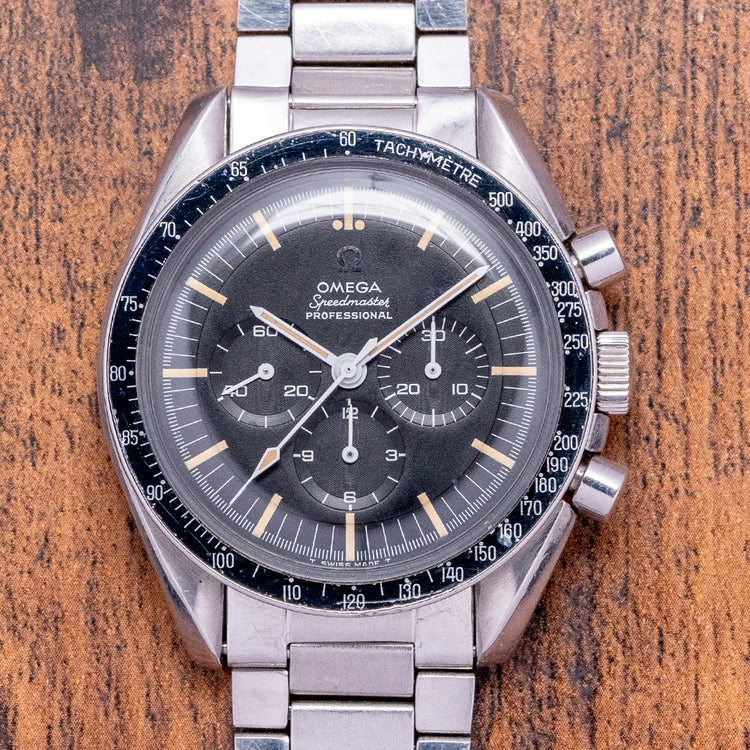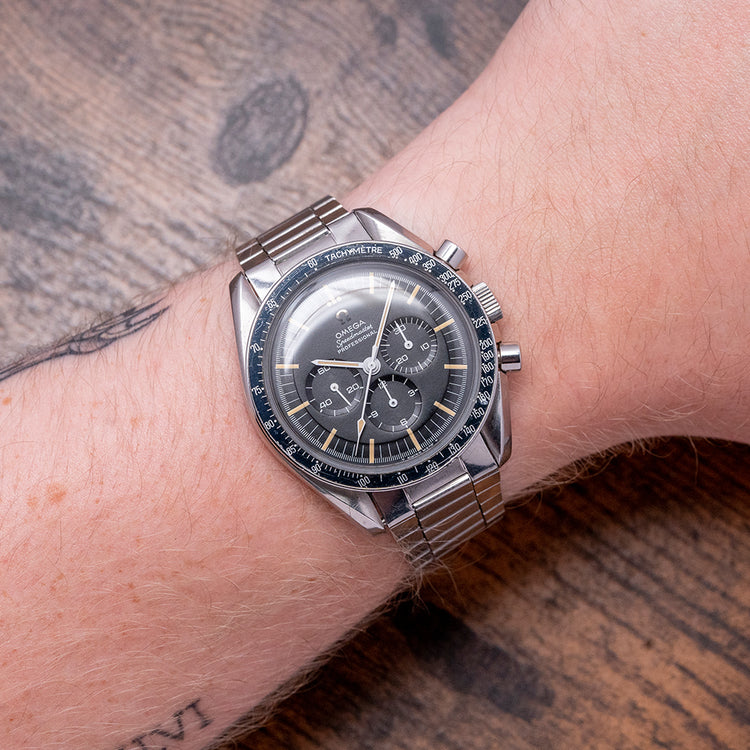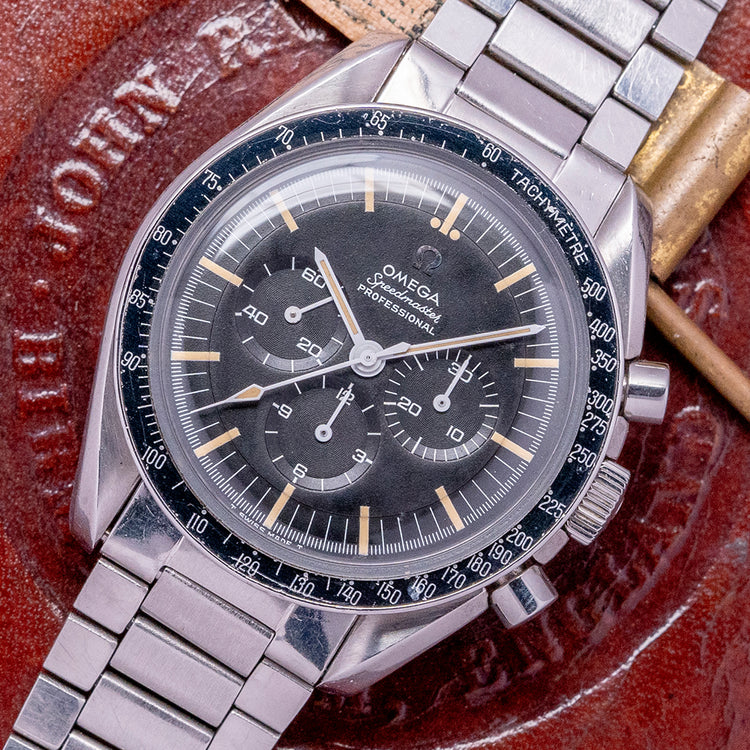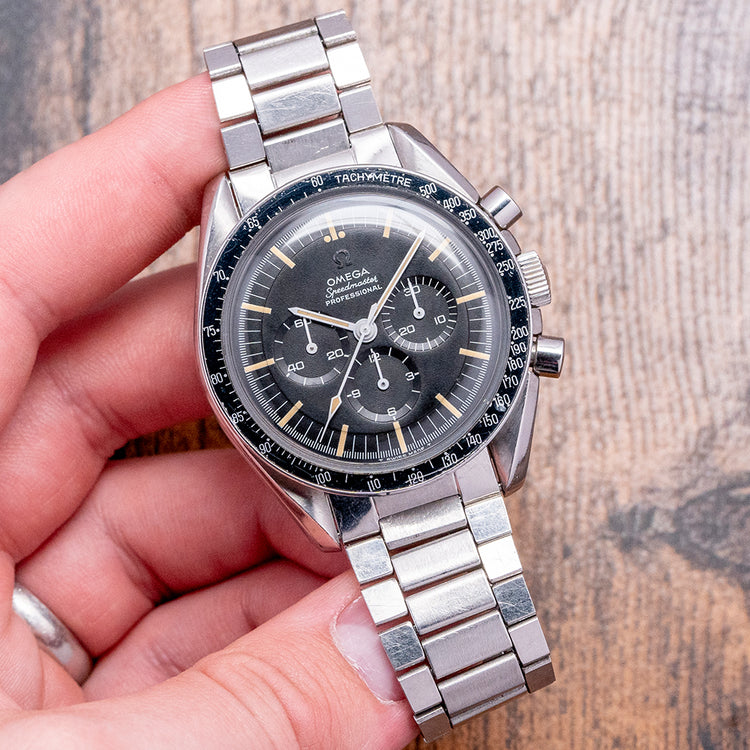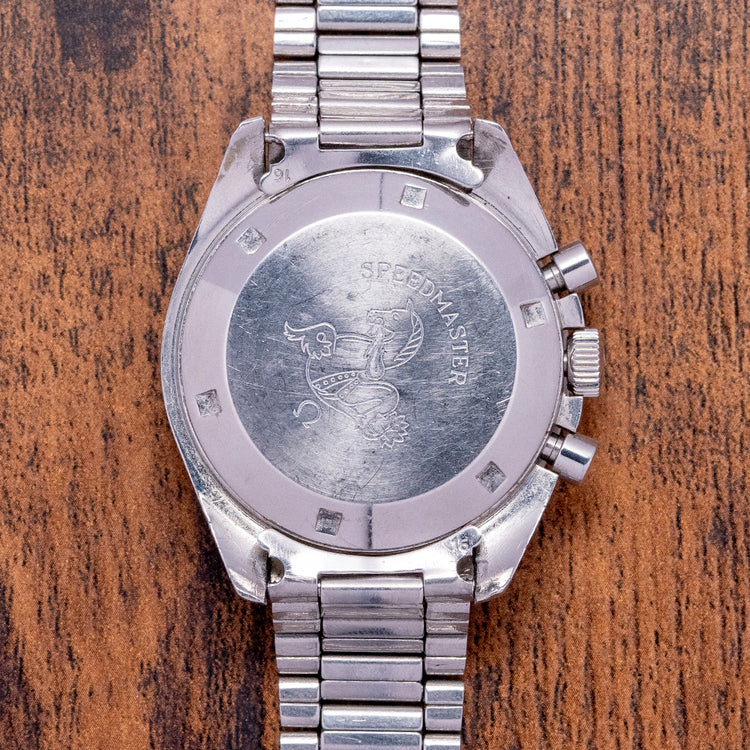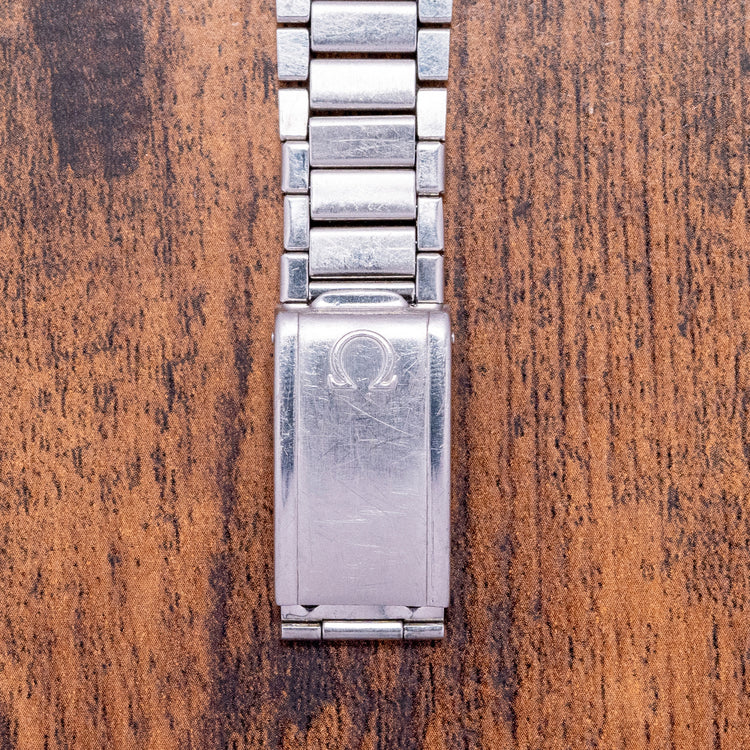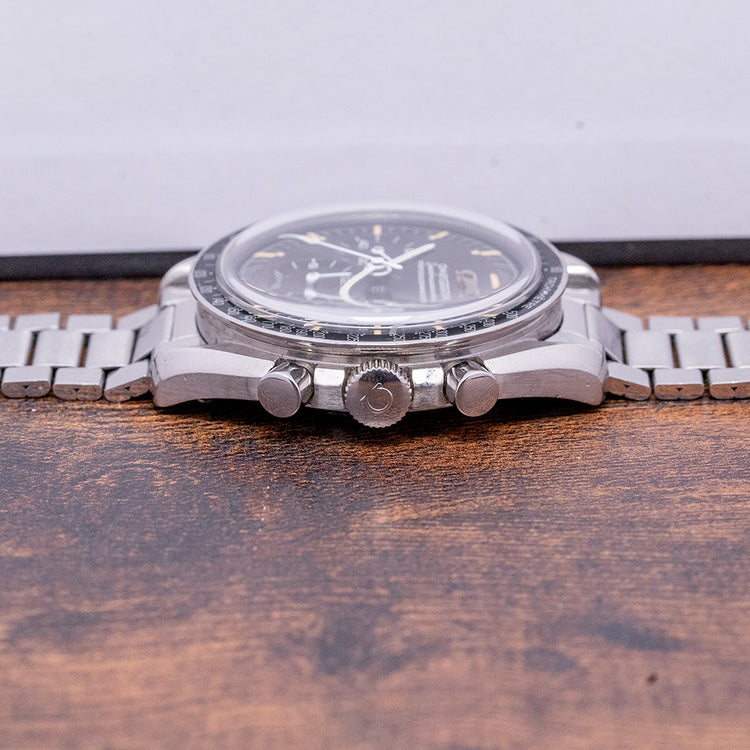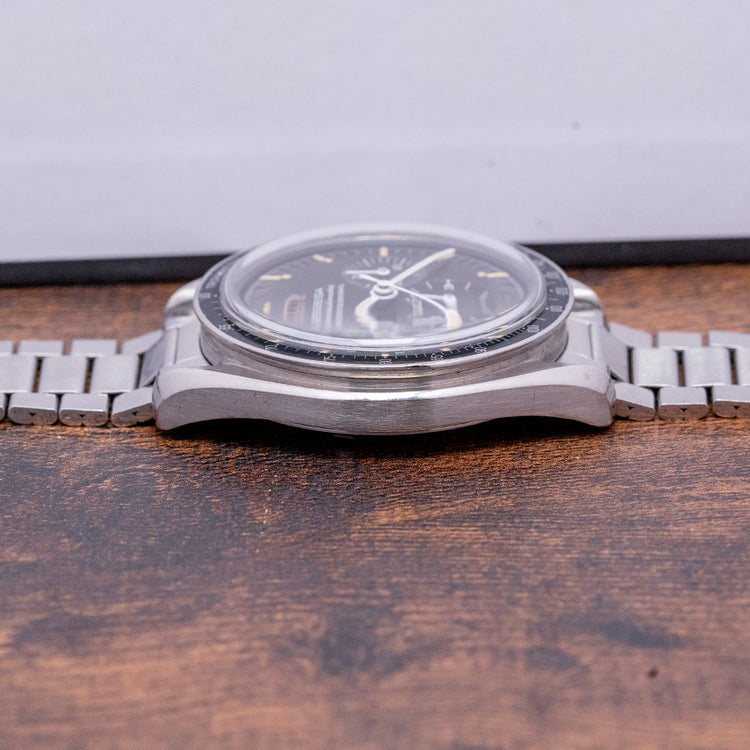More Information
Description
More
Less
Here we have a classic 1968 Omega Speedmaster Professional Cal. 321 145.012 DON; this Speedmaster reference was released in 1968 before the 1969 Moon landing and was one of the last to be powered by the Cal. 321. During the 1971 Apollo 14 mission, Astronauts Edgar Mitchell and Alan Shepard wore the ref: 145.012 on the moon, and their watches were added to the National Air and Space Museum in 1977. The 42mm stainless steel asymmetric case curves over your wrist with the characteristic twisted lugs, and a lug-to-lug length of 47mm and a case thickness of 13.5mm ensure a comfortable fit on your wrist. Brushed and polished surfaces transition with crisp, well-defined edges; down the right side, we have the taller piston pushers and a signed push/pull crown in the centre. A fixed stainless steel bezel, a black anodised aluminium Tachymetre scale insert has the characteristic “Dot Over Ninety”, holding a domed plexiglass crystal above a black step dial. An outer minute track is precisely executed baton indexes and double pips at 12 o’clock marking the hours, at 3 o’clock a 30-minute register, at 6 o’clock a 12-hour register and finally, at 9 o’clock a small seconds register, each with a stick hand that hits its mark, sitting recessed in the dial, slender sword hands are complemented by an arrow point chronograph hand. At 12 o’clock, we have the applied Omega motif and “Speedmaster Professional '' underneath, completing this distinctive sports chronograph. On the reverse, a screw-down case back engraved with “Speedmaster” and Hippocampus in the centre, which represents Neptune, the God of the sea; it was conceived by Pierre Borie after seeing a picture of Neptune riding a chariot pulled by seahorses; it is the reason why the seahorses are wearing a bridle. Inside a manually wound Omega Cal. 321, 17 jewels, beating at a leisurely 18,000 beats per hour, column wheel chronograph based on a Lemania 2310. The watch comes paired with its 1039 Omega 20mm stainless steel sprung loaded bracelet secured by a signed folding clasp and will fit up to a 7.1-inch wrist.
Points of Mention
More
Less
Personal Note
More
Less
Specification
More
Less
Movement : Manually Wound Omega Cal. 321
Age : Circa. 1968
Year : 1968
Case Size : 42mm
Case Thickness : 13.5mm
Lug to Lug : 47mm
Lugs : 20mm
Condition : Pre-Owned
Box and Papers : None
Case Material : Stainless Steel
Warranty : 12-Months NON-Waterproof Warranty
The wrist model's wrist size is 7inch
About Omega
More
Less
Description
Here we have a classic 1968 Omega Speedmaster Professional Cal. 321 145.012 DON; this Speedmaster reference was released in 1968 before the 1969 Moon landing and was one of the last to be powered by the Cal. 321. During the 1971 Apollo 14 mission, Astronauts Edgar Mitchell and Alan Shepard wore the ref: 145.012 on the moon, and their watches were added to the National Air and Space Museum in 1977. The 42mm stainless steel asymmetric case curves over your wrist with the characteristic twisted lugs, and a lug-to-lug length of 47mm and a case thickness of 13.5mm ensure a comfortable fit on your wrist. Brushed and polished surfaces transition with crisp, well-defined edges; down the right side, we have the taller piston pushers and a signed push/pull crown in the centre. A fixed stainless steel bezel, a black anodised aluminium Tachymetre scale insert has the characteristic “Dot Over Ninety”, holding a domed plexiglass crystal above a black step dial. An outer minute track is precisely executed baton indexes and double pips at 12 o’clock marking the hours, at 3 o’clock a 30-minute register, at 6 o’clock a 12-hour register and finally, at 9 o’clock a small seconds register, each with a stick hand that hits its mark, sitting recessed in the dial, slender sword hands are complemented by an arrow point chronograph hand. At 12 o’clock, we have the applied Omega motif and “Speedmaster Professional '' underneath, completing this distinctive sports chronograph. On the reverse, a screw-down case back engraved with “Speedmaster” and Hippocampus in the centre, which represents Neptune, the God of the sea; it was conceived by Pierre Borie after seeing a picture of Neptune riding a chariot pulled by seahorses; it is the reason why the seahorses are wearing a bridle. Inside a manually wound Omega Cal. 321, 17 jewels, beating at a leisurely 18,000 beats per hour, column wheel chronograph based on a Lemania 2310. The watch comes paired with its 1039 Omega 20mm stainless steel sprung loaded bracelet secured by a signed folding clasp and will fit up to a 7.1-inch wrist.
Points of Mention
Personal Note
Specification
The Brand
Enquire or Book an Appointment
Would you like to discover further details about this watch, or perhaps arrange an appointment to view and try it on? Complete this form and a member of our team will get back to you shortly.
You May Also Like




















